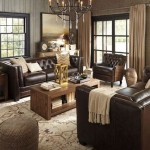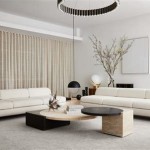How To Decorate a Room With Dark Paneling Walls and Ceiling
Dark paneling on walls and ceilings presents a unique set of challenges and opportunities when it comes to interior design. The deep hues can create a sense of intimacy and drama, but they also risk making a space feel cramped or gloomy if not handled correctly. Successfully decorating a room with dark paneling requires a careful consideration of color palettes, lighting, furniture choices, and the balance between highlighting the existing architectural features and creating a comfortable, livable environment.
The initial assessment of the room is crucial. Consider the size of the room, the orientation to natural light sources, and the existing style of the paneling. Is it a formal wood, a more rustic beadboard, or a modern, sleek composite material? The style of the paneling itself will inform the overall design direction.
Before commencing any decorating project, cleaning the dark paneling is paramount. Dust and grime can accumulate over time, dulling the richness of the wood or material. Use a soft cloth and a gentle wood cleaner or appropriate cleaning solution for the paneling's material. Avoid harsh chemicals that could damage the finish. Once cleaned, the true tone and texture of the paneling will be revealed, providing a better foundation for decorating decisions.
Illuminating the Space: Importance of Lighting
Effective lighting is perhaps the most crucial element in decorating a room with dark paneling. Dark surfaces absorb light, so it’s necessary to compensate with multiple layers of illumination. Relying solely on a single overhead light fixture will likely result in a dimly lit and uninviting space. Instead, strategically incorporate a variety of light sources.
Ambient lighting, such as recessed lights or track lighting, provides overall illumination. Place these fixtures to wash the walls with light, highlighting the texture and detail of the paneling. Dimmers are highly recommended, allowing for adjustment of the light level based on the time of day and the mood you wish to create.
Task lighting focuses on specific areas for activities such as reading or working. Table lamps, floor lamps, and desk lamps provide localized light and can also serve as decorative elements. Choose lamps with light-colored shades to maximize the amount of light they emit. Consider the placement of task lighting to avoid creating harsh shadows.
Accent lighting is used to highlight artwork, architectural features, or decorative objects. Spotlights, sconces, and picture lights can draw attention to specific elements within the room and add visual interest. Accent lighting can also be used to create a sense of depth and dimension.
Beyond the type of lighting, consider the color temperature of the light bulbs. Warm light (around 2700K-3000K) creates a cozy and inviting atmosphere, while cool light (around 4000K-5000K) provides a brighter and more energizing feel. The choice depends on the room's function and the desired aesthetic. In a room with dark paneling, warmer tones often work best to counteract the coolness of the dark surfaces and create a balanced ambiance.
The strategic placement of mirrors can also enhance the lighting in a room with dark paneling. Mirrors reflect light and visually expand the space, making it feel larger and brighter. Position mirrors to reflect natural light from windows or artificial light from lamps to maximize their effect.
Balancing Dark and Light: Color Palette Considerations
Selecting the right color palette is essential for creating a balanced and harmonious space. The goal is to avoid making the room feel too dark or monotonous. Incorporating contrasting colors and textures will add visual interest and prevent the space from feeling oppressive.
Light and bright colors provide a stark contrast to the dark paneling, creating a dynamic interplay. Whites, creams, and pastels can be used on furniture, textiles, and accessories to lighten the overall feel of the room. These colors reflect light and visually expand the space.
Consider incorporating pops of bold, vibrant colors to add personality and energy to the room. Accent colors such as teal, coral, mustard, or emerald green can be used in pillows, throws, artwork, and other decorative objects. These colors will draw the eye and prevent the room from feeling dull.
Metallics, such as gold, silver, and bronze, can add a touch of glamour and sophistication to a room with dark paneling. Use metallic accents in lighting fixtures, picture frames, decorative objects, and even furniture details. The reflective surfaces will bounce light around the room and create a sense of luxury.
When choosing colors, consider the undertones of the dark paneling. Is it warm or cool? Selecting colors that complement the undertones of the paneling will create a more cohesive and harmonious look. For example, if the paneling has warm undertones, consider using warm-toned neutrals and accent colors. If the paneling has cool undertones, consider using cool-toned neutrals and accent colors.
The use of textures can also add depth and interest to the color palette. Incorporate natural textures such as linen, wool, cotton, and leather to create a sense of warmth and comfort. Contrasting textures, such as smooth silk and rough burlap, can add visual intrigue. Consider the tactile experience of the fabrics and materials used in the room.
Rugs play a significant role in anchoring the space and introducing color and texture. A light-colored rug will brighten the floor and create a visual contrast with the dark paneling. Choose a rug with a pattern or texture to add visual interest. Consider the size of the rug in relation to the furniture arrangement. A rug that is too small will make the room feel disjointed, while a rug that is too large will overwhelm the space.
Furniture and Accessories: Creating a Balanced Composition
The selection of furniture and accessories is crucial for creating a balanced and comfortable space. The goal is to choose pieces that complement the dark paneling without overwhelming the room. Consider the scale, style, and color of the furniture when making selections.
Light-colored furniture will provide a visual contrast to the dark paneling and prevent the room from feeling too heavy. Choose sofas, chairs, and tables in shades of white, cream, gray, or light wood tones. These colors will create a sense of airiness and lightness.
Consider the style of the furniture in relation to the style of the paneling. If the paneling is traditional, opt for classic furniture pieces with elegant lines and details. If the paneling is modern, choose sleek and minimalist furniture with clean lines. The furniture should complement the overall aesthetic of the room.
Incorporate a mix of textures and materials to add depth and interest to the furniture arrangement. Combine upholstered pieces with wood or metal accents. Use throws and pillows in a variety of fabrics to add warmth and comfort. Consider the tactile experience of the furniture and accessories.
Artwork can add personality and visual interest to a room with dark paneling. Choose pieces that feature light colors and bold designs to create a striking contrast. Consider the size and scale of the artwork in relation to the wall space. A large piece of artwork can serve as a focal point in the room.
Plants can bring life and vibrancy to a room with dark paneling. Choose plants with lush green foliage to add a touch of nature. Place plants in decorative pots or planters that complement the color palette of the room. Plants can also help to purify the air and create a more relaxing atmosphere.
Accessories should be carefully curated to avoid cluttering the space. Choose a few key pieces that reflect your personal style and add visual interest. Consider the scale and placement of accessories to create a balanced composition. Group accessories together in vignettes to create a cohesive look.
Window treatments can also play a significant role in the overall design of the room. Choose light-colored curtains or blinds to allow natural light to enter the space. Avoid heavy, dark curtains that will block light and make the room feel smaller. Consider the privacy needs of the room when selecting window treatments.
Ultimately, the goal is to create a space that reflects personal taste and style while honoring the unique characteristics of the dark paneling. Careful attention to lighting, color, furniture, and accessories will result in a room that is both visually stunning and comfortably livable.

Home Office With Dark Wood Wall Paneling And Matching Coffered Ceiling Square All Grid Design Panel Walls

Astonishing Home Makeovers You Won T Believe Paneling Makeover Wood Painting

How To Make Wood Paneling Look More Modern Northern Log

How To Make Wood Paneling Look More Modern Northern Log

Before And After Painted Wood Panelling

Lighten Look Of Dark Wood Room In 1920s Cottage Without Painting

25 Best Decorative Wall Paneling Ideas From Designers In 2025

How To Choose The Colors Of Wall Panels In House

25 Best Decorative Wall Paneling Ideas From Designers In 2025

25 Inviting Living Rooms With Wood Walls Digsdigs







